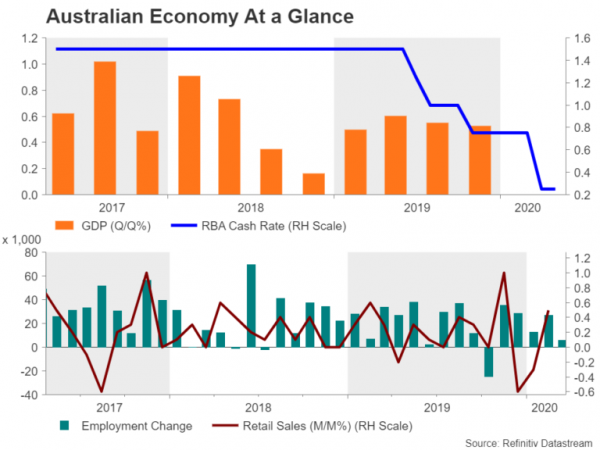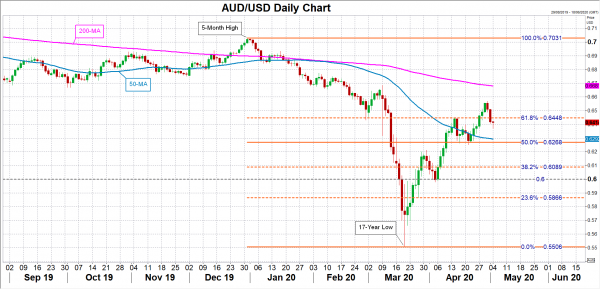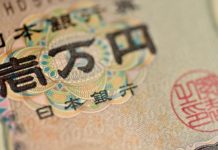The Reserve Bank of Australia will announce its latest policy decision on Tuesday (4:30 GMT) and is not anticipated to make any changes to the cash rate or its quantitative easing (QE) program. But as one of the newest members to the QE club, the RBA may also be the first to exit its emergency programs as the virus is brought under control in Australia and the Bank has had to make less purchases lately to keep the target on 3-year government bond yields at 0.25%. However, that’s not to say that everything will be rosy in the RBA’s quarterly economic assessment that’s due on Friday (01:30 GMT), meaning potential volatility for the Australian dollar.
“National output is likely to fall by around 10%”
The Australian economy hasn’t been in a technical recession (defined as two consecutive quarters of negative growth) since 1991. It even avoided one during the 2008-09 financial crisis. So things must really be bad if it is now almost certain to break its run of the longest expansion on record for any major economy.
The RBA’s governor, Philip Lowe, has already warned of a sharp drop in economic output. Lowe is predicting GDP could shrink by as much as 10% in the first six months of 2020 and the jobless rate could shoot up to around 10%. However, while there’s no doubt that the economy will take a big hit from the COVID-19 pandemic, it is also plausible it may have registered slight growth in the first quarter.
Business and consumer activity had started to bounce back from a weak Q4 early in the year as trade tensions eased. Preliminary estimates of retail sales released by the Australian Bureau of Statistics show the panic buying at supermarkets drove March sales to an 8.2% year-on-year gain. Even employment unexpectedly rose in March, suggesting much of the virus impact will probably be felt in Q2.
RBA tapering QE already?
However, the RBA hasn’t taken any chances and launched its first ever QE programme in March, while slashing the cash rate to the effective lower bound of 0.25%. But after just a few weeks, the Bank has already started to scale back its purchases as the yield on 3-year government bonds that it targets as part of its yield curve control has been stable lately. Hence, the RBA has not needed to intervene as much to maintain the yield at 0.25%.
Growing investor confidence in the Australian economy is what’s behind this stability in the Australian sovereign bond market and also what’s turbo-charged the local dollar. The aussie has rallied by about 16% from the 17-year trough it brushed in March as Australia did not suffer the same unfortunate fate as Europe and the United States in terms of the number of virus cases and deaths reaching calamitous levels.
Australia is now in the process of slowly lifting the tough lockdown measures it had imposed in March, and combined with the fact that China – the biggest destination for Australian exports – has also relaxed most of its restrictions, the outlook is looking somewhat brighter than it did just a few weeks ago.
New forecasts eyed
There is little expectation therefore that policymakers will announce any new stimulus measures on Tuesday and the market reaction will depend mostly on the tone of the RBA’s statement. However, the real point of interest will likely be Friday’s Monetary Policy Statement, which is the Bank’s quarterly outlook report. With encouraging signs that the worst is probably over for Australia, investors will want to see how quick a recovery the RBA is forecasting and whether the economy will require any additional stimulus.
A not-so-pessimistic set of projections could spur the aussie to extend its recovery towards its 200-day moving average (MA) in the $0.6680 region.
Trade war talk upsets aussie’s bull run
But the aussie may not be out of the woods just yet. A worrying resurgence of President Trump’s anti-China rhetoric in recent days has reawakened trade war fears and this poses a real threat to the global economy’s recovery from the coronavirus crisis. That prospect has knocked the aussie’s uptrend off course, and combined with an overly cautious outlook by the RBA, could bring fresh pain for the currency.
Should the risk-off moves deepen, the aussie could slide further, with initial support likely in the $0.6268-$0.6292 area, where the 50-day moving average and the 50% Fibonacci retracement of the January-March downtrend are aligning. If this support fails, there would be increased risks of the $0.60 level being targeted by the bears.














